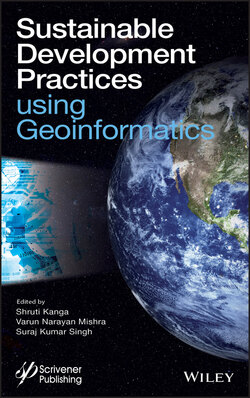Читать книгу Sustainable Development Practices Using Geoinformatics - Группа авторов - Страница 13
1
The Impact of Rapid Urbanization on Vegetation Cover and Land Surface Temperature in Barasat Municipal Area
ОглавлениеAniruddha Debnath, Ritesh Kumar*, Taniya Singh and Ravindra Prawasi
Haryana Space Applications Centre, Hisar, Haryana, India
Abstract
India is a developing country and its growing phase is facing the trio of urbanization, modernization, and globalization. The study pertains to find out the impacts of rapid urban development on vegetation cover and its inter-relationship with the variability of Land Surface Temperature (LST). The study area, Barasat municipality, is facing rapid urbanization since mid of 1990s; hence, the number of people residing in Barasat is increasing rapidly, resulting in dense, concrete, and high-rise buildings. The Barasat city is adjacent to Kolkata metropolitan city and is a part of Greater Kolkata. Therefore, there is escalation in number of multi-storied buildings along with proliferating population leading to urban sprawl in the study area. These facts promote Barasat to be an Urban Heat Island (UHI). The study aims to show the change in variability of surface temperature from 2001 to 2017 with the help of geospatial techniques and using Landsat data of multiple dates in order to uncover the modification/variation in the urbanization and then correlate it with NDVI (Normalized Difference Vegetation Index), and LST. The 17 years’ time scale is very small period for change detection of urban land use change but enough to show the urban growth and its pattern and trend in relation to surface temperature variation. The remote sensing and GIS provides very useful tool for the analysis of changes in environmental condition due to human activity in the study area.
Keywords: Urbanization, UHI, NDVI, LST
